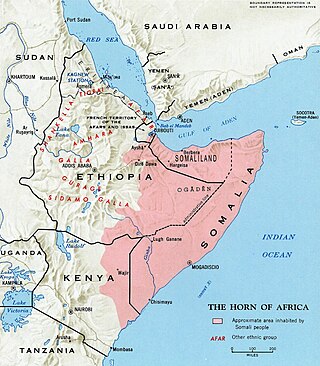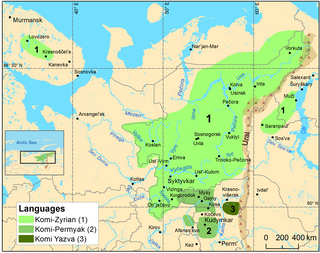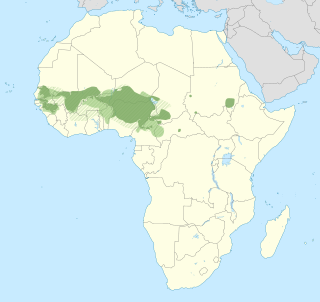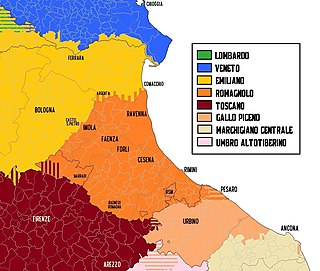
Somali is an Afroasiatic language belonging to the Cushitic branch. It is spoken as a mother tongue by Somalis in Greater Somalia and the Somali diaspora. Somali is an official language in Somalia and Ethiopia, and a national language in Djibouti as well as in northeastern Kenya. The Somali language is written officially with the Latin alphabet although the Arabic alphabet and several Somali scripts like Osmanya, Kaddare and the Borama script are informally used.
Masaba (Lumasaaba), sometimes known as Gisu (Lugisu) after one of its dialects, is a Bantu language spoken by more than two million people in East Africa. The Gisu dialect in eastern Uganda is mutually intelligible with Bukusu, spoken by ethnic Luhya in western Kenya. Masaba is the local name of Mount Elgon and the name of the son of the ancestor of the Gisu tribe. Like other Bantu languages, Lumasaba nouns are divided into several sets of noun classes. These are similar to the genders in Germanic and Romance languages, except that instead of the usual two or three, there are around eighteen different noun classes. The language has a quite complex verb morphology.

Komi-Permyak language, also known as Permyak, is one of two Permic varieties in the Uralic language family that form a pluricentric language, the other being Komi-Zyryan.

Sylheti is an Indo-Aryan language spoken by an estimated 11 million people, primarily in the Sylhet Division of Bangladesh, Barak Valley of Assam, and northern parts of Tripura in India. Besides, there are substantial numbers of Sylheti speakers in the Indian states of Meghalaya, Manipur and Nagaland as well as diaspora communities in the United Kingdom, the United States, Canada and the Middle East.

Iñupiaq or Inupiaq, also known as Iñupiat, Inupiat, Iñupiatun or Alaskan Inuit, is an Inuit language, or perhaps group of languages, spoken by the Iñupiat people in northern and northwestern Alaska, as well as a small adjacent part of the Northwest Territories of Canada. The Iñupiat language is a member of the Inuit-Yupik-Unangan language family, and is closely related and, to varying degrees, mutually intelligible with other Inuit languages of Canada and Greenland. There are roughly 2,000 speakers. Iñupiaq is considered to be a threatened language, with most speakers at or above the age of 40. Iñupiaq is an official language of the State of Alaska, along with several other indigenous languages.

Fula, also known as Fulani or Fulah, is a Senegambian language spoken by around 36.8 million people as a set of various dialects in a continuum that stretches across some 18 countries in West and Central Africa. Along with other related languages such as Serer and Wolof, it belongs to the Atlantic geographic group within Niger–Congo, and more specifically to the Senegambian branch. Unlike most Niger-Congo languages, Fula does not have tones.

Ottawa or Odawa is a dialect of the Ojibwe language spoken by the Odawa people in southern Ontario in Canada, and northern Michigan in the United States. Descendants of migrant Ottawa speakers live in Kansas and Oklahoma. The first recorded meeting of Ottawa speakers and Europeans occurred in 1615 when a party of Ottawas encountered explorer Samuel de Champlain on the north shore of Georgian Bay. Ottawa is written in an alphabetic system using Latin letters, and is known to its speakers as Nishnaabemwin 'speaking the native language' or Daawaamwin 'speaking Ottawa'.

The Rahanweyn, also known as the Digil and Mirifle are a major Somali clan. It is one of the major Somali clans in the Horn of Africa, with a large territory in the densely populated fertile valleys of the Jubba and Shebelle rivers and the areas inbetween which are mainly inhabited by settlers from the Digil and Mirifle lineages.
Bininj Kunwok is an Australian Aboriginal language which includes six dialects: Kunwinjku, Kuninjku, Kundjeyhmi, Manyallaluk Mayali (Mayali), Kundedjnjenghmi, and two varieties of Kune. Kunwinjku is the dominant dialect, and also sometimes used to refer to the group. The spellings Bininj Gun-wok and Bininj Kun-Wok have also been used in the past, however Bininj Kunwok is the current standard orthography.

The endoglossic language of Somalia has always been Somali, although throughout Somalia's history various exoglossic languages have also been used at a national level.
The Somali languages form a group that are part of the Afro-Asiatic language family. They are spoken as a mother tongue by ethnic Somalis in Horn of Africa and the Somali diaspora. Even with linguistic differences, Somalis collectively view themselves as speaking dialects of a common language.
Garre is a Somali language spoken by the Garre who reside in southern Somalia, Ethiopia and northern Kenya. It belongs to the family's Cushitic branch, and had an estimated 50,000 speakers in Somalia in 1992, 57,500 in 2006 and 86,000 in 2020. The total number of speakers in Kenya and Somalia was estimated at 685,600 in 2019. Garre is in the Digil classification of Somali dialects. Garre language is readily intelligible to Digil speakers, as it has some affinity with Af-Maay and Af-Boon.

Romagnol is a Romance language spoken in the historical region of Romagna, consisting mainly of the southeastern part of Emilia-Romagna, Italy. The name is derived from the Lombard name for the region, Romagna. Romagnol is also spoken outside the region, particularly in the independent Republic of San Marino. Romagnol is classified as endangered because older generations have "neglected to pass on the dialect as a native tongue to the next generation".

The Sultanate of the Geledi also known as the Gobroon dynasty, was a Somali kingdom that ruled parts of the Horn of Africa during the late-17th century to the early 20th century. The Sultanate was governed by the Gobroon dynasty. It was established by the Geledi soldier Ibrahim Adeer, who had defeated various vassals of the Ajuran Sultanate and elevated the Gobroon to wield significant political power. Following Mahamud Ibrahim's consolidation, the dynasty reached its apex under Yusuf Mahamud Ibrahim, who successfully modernized the Geledi economy and eliminated regional threats with the Conquest of Bardera in 1843, and would go on to receive tribute from Said bin Sultan, the ruler of the Omani Empire. Geledi Sultans had strong regional ties and built alliances with the Pate and Witu Sultanates on the Swahili coast. Trade and Geledi power would continue to remain strong until the death of the well known Sultan Ahmed Yusuf in 1878. The sultanate was eventually incorporated into Italian Somaliland in 1911.
Eton, or Ìtón, is a Bantu language spoken by the Eton people of Cameroon.
Bandial (Banjaal), or Eegima (Eegimaa), is a Jola language of the Casamance region of Senegal. The three dialects, Affiniam, Bandial proper, and Elun are divergent, on the border between dialects and distinct languages.
Ashraf is a speech variety of uncertain classification within the East Omo-Tana sub-branch found in the Marka district of the Lower Shebelle region and Banaadir region of southern Somalia.
Girirra also called Gariire is a Cushitic language of Ethiopia. It has extensive borrowing from Somali. Although not mutually intelligible with Somali, it is estimated that around 70% of the Garirra language is made up of Somali loan words. There has not been many studies on the language itself and is often grouped into a small umbrella of the Macro-Somali language family including relatives like: Rendille, Boni, Bayso, and the two dialects of Somali, being Af-Maay, and Af-Maxaa.
The Geledi are a Somali clan that live predominantly in the environs of Afgooye city. They are a sub-clan of the Rahanweyn and led the Geledi sultanate during the late 17th to early 20th century. They are divided into two main lineage groups: the Tolweyne and the Yabadhaale.
Yerwa Kanuri or Central Kanuri is a variety of the Kanuri language spoken mainly in adjacent parts of Nigeria, Niger, Cameroon, and Chad as well as by a diaspora community residing in Sudan. It is spoken by the Yerwa Kanuri who are the largest subgroup of Kanuri people in West and Central Africa today. Yerwa Kanuri is the largest of the Kanuri varieties, it is also used for both oral and written communication in Cameroon and is classified within the Saharan branch of the Nilo-Saharan language family. The Yerwa Kanuri variety of the Kanuri language in Nigeria is written using the Ajami script of the Arabic alphabet.











